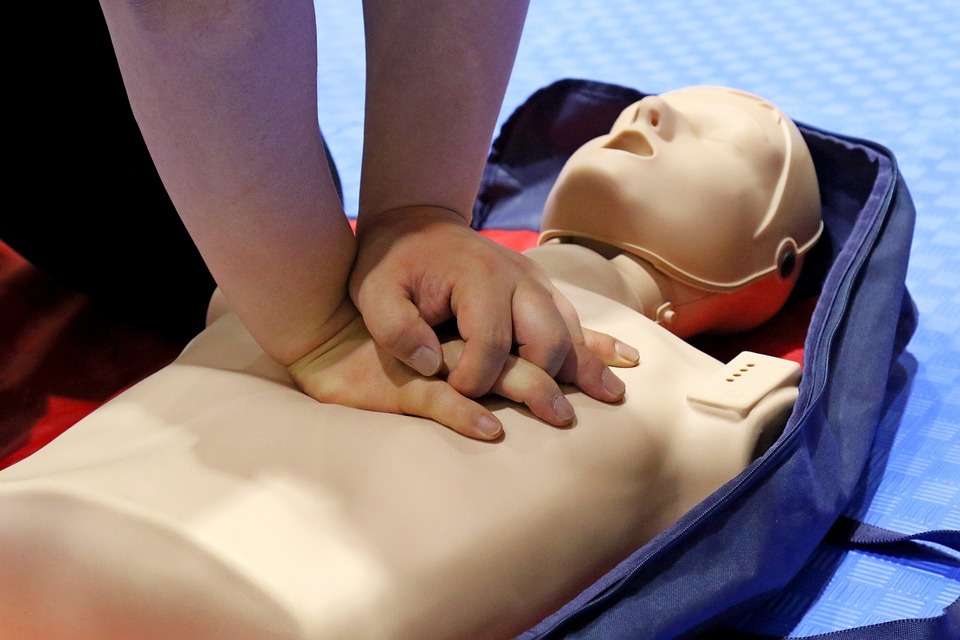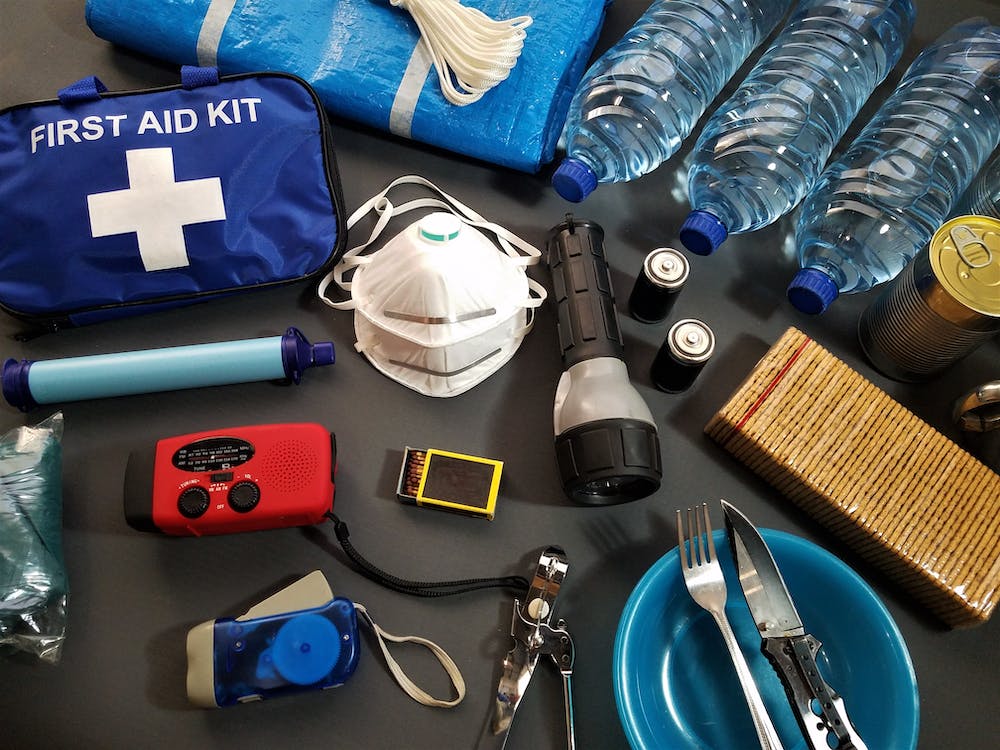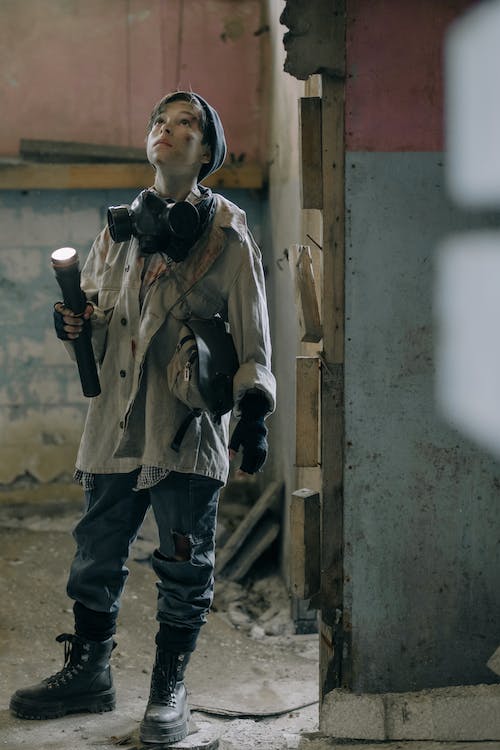Preparing for the unexpected is crucial, especially when it comes to the safety and well-being of children. There are many instances when parents might not be with their children. Whether you’re planning a family camping trip or simply want to be prepared for emergencies, having a survival kit for your kids can provide peace of mind and help ensure their safety. It is also important to select the right survival gear for getting out of difficult situations.
Besides, in the era we live in, it has become essential to teach our children about how to deal with emergencies. Preparing for emergencies can also foster a sense of responsibility and self-reliance, as children learn to take care of themselves and others in times of need. Let’s dig into making a survival kit for kids so you have your child prepared for emergency situations.
When To Use An AED – Before Or After CPR?
Basic Essentials for a Survival Kit
The following list of items considered to be the fundamentals of a survival kit for kids.
- Water Bottles: One common issue during emergencies is the lack of drinking water, which is why water bottles should be included in the survival kit. It’s recommended to have bottles that can store at least 2-3 gallons of water to make sure kids have an ample water supply for at least 3-4 days. If you don’t have space, you can also go with 1 gallon.
- Non-Perishable Food: Pack non-perishable food items like granola bars, canned goods, and trail mix. These items can provide much-needed energy during emergencies. Besides, with their long expiry dates, you won’t have to worry about them going bad soon. Common examples include Canned Tuna, Canned Stews, Peanut Butter, and Canned Beans.
- First Aid Kit: A basic first aid kit with items such as band-aids, gauze, and antiseptic wipes is important to have in case of injuries. However, it is even more important to also teach your child about how to use common items that come with a first aid kit.
- Warm Blankets: Emergencies can surely arise in the cold too. Your child must have blankets to protect themselves from the intense cold until help arrives.
- Flashlights, Batteries, and Whistles: Common survival items like these would be useful for accessibility and reach. Flashlights assist in dark places while whistles can be used to call for help.
- Multi-purpose tool: A multi-purpose tool such as a Swiss knife can prove to be a handy tool that can be used for a variety of tasks. However, make sure to teach your kids about its use as using it without any training can be dangerous for the little hands.
- Common Items: Common items such as soap, sachets of shampoo, toothbrushes, and toothpaste are also important, although not necessary, for survival.
- Emergency Contact Information: Every kid should have emergency contact information. In cases where the child is unconscious, this emergency contact will be the only source to get back to the guardians.
Tips for Packing the Survival Kit
Now that you have the items ready, the question remains: How to have all the items packed in a way that they don’t get damaged?
It’s recommended to have a backpack or a duffel bag that comes with multiple compartments. Such a bag will hold everything in place and provide ample space for all the items mentioned above.
Once you have the bag, start off by placing heavy items like water bottles and canned food items in the bottom of the bag. Water bottles should be fully sealed to eliminate chances of leakage. Next up, add a warm blanket and flashlights. Once this is done, add the First Aid Kit and the Emergency Contact Information. Both of these should be kept on the top because they are most important in case of an emergency. For smaller items like multi-purpose tools, whistles, batteries, and other such items, use the side pockets or the secondary section of the bag.
It’s also a good idea to periodically check and update the contents of the survival kit and replace items like canned foods, medicines in First Aid Kit, and water, when necessary.
Special Considerations for Kids
While the above-mentioned items are important, here are some other items too that can be made part of a kids’ survival kit.
- Your Child’s Favorite Toy: A comfort item, such as a stuffed toy, could be quite relieving for your young one. If your child has a favorite toy, buy another one and have it in the survival kit. On the other hand, you can also use a different toy.
- Special Medication: A regular First Aid Kit contains most items important for instant medical attention. However, if your child is facing a certain problem, or is allergic to certain medication, keep the alternative medicines in the First Aid Kit. It is a wise idea to have a special note inside the First Aid Kit which addresses the special medical condition your child is facing. In many circumstances, vaccines impact your immune system which is why a special note regarding your child’s health must be present.
- A Photo of the Child with Parents: A photo of the child with parents can be quite useful. Not only will it help in comforting the child but he will also be able to explain to others about his / her parents.
- Entertainment Items: A puzzle, a favorite book, and a coloring book can be great items for the entertainment of a child. This will keep the child engaged for a long time in a situation of distress.
Safety Guidelines for Kid-Specific Items
Every parent wants to give their child the best when it comes to a survival kit but it is important to not compromise safety when doing so.
- Choking Hazard: While packing any items, keep in mind that the parts must not be having any type of choking hazard. Any form of mechanical toys could pose a risk for your child, so it is better not to pack them.
- Light Clothing: Sometimes, clothing can cause rashes and allergies to the skin. It is advised to keep light cotton clothes in the survival kit. If you are worried about keeping your child warm, focus on getting a warmer blanket instead.
- Teaching Your Child: An even more important aspect to consider is teaching your child about the use and safety of the survival kit.
Emergency Preparedness Activities for Kids
Next up, let’s talk about how to prepare your child for emergencies as well as activities that can help in teaching the child.
- Evacuation Drills: Drills like these can be helpful in training as well as understanding the mistakes that children commonly make. Make an emergency drill activity where the child has to evacuate the home. Take one day to teach them and another to practice what you taught. Repeat the process until the child is able to successfully evacuate the house in a designated time frame.
- Teaching First Aid: As the survival kit has a First Aid kit, it becomes important that your child knows how to use it. Use video tutorials to explain how to properly apply band-aids, antiseptic wipes, gauzes, and how to tie a bandage. Ensure that you teach them the sensitivity of certain items such as Iodine so that they do not end up harming themselves. We also recommend teaching your child the fundamentals of CPR (Cardiopulmonary resuscitation).

- Explaining Survival: Your child might pass in an evacuation drill or First Aid kit training, but it is important to determine whether they have learnt the survival tips for an upcoming situation or not. Parents should explain to their children about optimal meals and water consumption. Explain the aspect of saving more and consuming as little as necessary to survive.
- Emotional Training: A core aspect of an emergency is how a child responds emotionally. Some might pass in an evacuation drill and survival training, but fail when it comes to managing their emotions. It is vital to train your children emotionally and make them strong. Encourage open communication so that they can come to you for help and guidance with all questions.
Make These Activities a Fun Game
Many children might not be interested in taking part in any survival training. For those, we recommend adding a little twist and making the entire activity more entertaining.
- Invite the Neighbours or Friends: Your child might not be interested if he is doing it all alone. However, if they have friends or neighbors coming with them, they are more likely to take part in the activity. You can plan a Scavenger Hunt for the entire group. Hide emergency items around the house or yard, and have your kids find and identify each item. Besides, you can also go for role-play games for an emergency like a power outage. This way, different children will have different roles in dealing with a critical situation. In case other people are not present, you can participate yourself.
- Use Puppets / Dolls / Toys: One way to make the activities more interesting is by the use of your child’s favorite toys, puppets, and dolls. You can also ask your child to practically demonstrate different aspects such as applying bandages, iodine, and giving CPR.
Importance of Communication and Emergency Plan
A thoroughly designed communication and emergency plan can help ensure the safety of people in distress. Making the right plan is as important as executing it.
A well-sought communication and emergency plan will minimize confusion and ensure that a standard set of protocols are being followed. Instead of everyone making their own approach, it is better to follow certain rules. A plan of action gives everybody a direction, which children are normally lacking. It will ensure that people in an emergency are all on the same page without any hindrances. The chances of such a group making it through a difficult situation are way higher than someone who isn’t.
Additional benefits of a communication and emergency plan include the protection of human lives. Take the example of a regular 911 call. How are they able to quickly save the lives of people? It happens because they are well-organized, and follow the right protocol. For instance, if your child is with a group of people and someone immediately requires CPR, a well-trained child might be able to provide one and save a life. Even in minor cases such as an injury, if your child is trained on covering a wound, he might be helping out someone in a life-saving manner.
Involving Kids in Emergency Planning and Communication
It’s recommended to practice everything together with the child. Make them a part of the discussion when you are penning down the rules and jotting everything together. Often, kids come up with ideas that the elders might not have in their minds. The more you take their opinion in planning, the higher the chances that they will actually end up doing what they say.
It is important to consider the developmental stage of the child when creating a certain emergency plan. Make it age-appropriate for a better understanding of your child. If the child is younger than 10 years, use pictorial illustrations and images to make it interactive for the child. If the child is older than 10 years, use of Youtube videos, as well as detailed text-based instructions for a better understanding. Involving kids in emergency planning and communication can help them feel more prepared and empowered in case of an emergency.
Final Words
A well-equipped survival kit with items such as water bottles, non-perishable food, a first aid kit, warm blankets, flashlights, batteries, and emergency contact information can help kids survive and cope with unexpected events. The entire aspect of surviving through a tough time is also helpful towards the development of your child. It will help in developing their analytical skills, tactical skills, and contingency management skills. To ensure that the children are actively taking part in learning about survival, the process should be fun and engaging, and tailored to their age and developmental stage.




